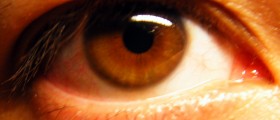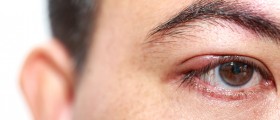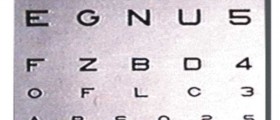Overview
Eye floaters are spots in an individual's line of vision and they may appear centrally or peripherally (the sides). These floaters can look like gray or black strings, specks, or cobwebs that seem to drift around when moving the eyes and appear to move away when trying to look at them directly.
If flashing lights occur at the same time as the floaters then a further medical assessment is warranted in such individuals.

Risk factors and causes
Risk factors associated with the development of floaters include:
- Being over 50 years of age.
- Being near-sighted.
- Having experienced trauma to the eye.
- As a complication of cataract surgery.
- Inflammation of the eye.
- Diabetic retinopathy.
The most common causes of eye floaters include:
- Age-related changes - changes in the vitreous (gel-like substance in the eye-balls) cause the fluid to become partially liquefied which causes the fluid to make clumps and become stringy. This blocks some of the light entering the eyes casting shadows onto the retina, the area at the back of the eyeball that sends the images to the brain via the optic nerve for interpretation.
- Inflammation in the back of the eye - posterior uveitis is a condition characterized by inflammation of the layers of the uvea at the back of the eye and this can also lead to floaters.
- Bleeding in the eye - if there is bleeding into the vitreous this can also cause the condition.
Signs and symptoms of retinal tear
As mentioned, floaters and flashing light in one's peripheral vision should raise the suspicion of a retinal tear. Other signs and symptoms of this pathology include:
- Blurred vision.
- Gradually reduced peripheral vision.
- A curtain or screen-like shadow appearing over the visual field.
Management
A retinal tear may be managed using one of the following procedure:
- Photocoagulation - a procedure where a laser beam is used to burn the area around the retinal tear to cause scarring so that the detached area can reattach itself.
- Cryopexy - here, a freezing probe is applied to the outer surface of the eye where the retinal tear is located. The freezing, like the laser beam, causes scarring that helps the torn area to reattach to the eye-wall.
- Pneumatic retinopexy - a bubble of gas or air is injected into the central aspect of the eye which pushes the retina against the eye-wall. Cryopexy is then performed to reattach the retina.
- Scleral buckling - here, the surgeon sutures a piece of silicone material to the sclera (white of the eye) and this indents the wall to relieve some of the force from the vitreous tugging on the retina.
- Vitrectomy - the procedure entails draining the vitreous fluid from the eye-ball and this is replaced with silicone, gas, or air to help flatten the retina against the eye-wall.
- Fraser S, Steel D. Retinal detachment. BMJ Clinical Evidence. 2010, 2010:0710.
- Photo courtesy of SteadyHealth
















